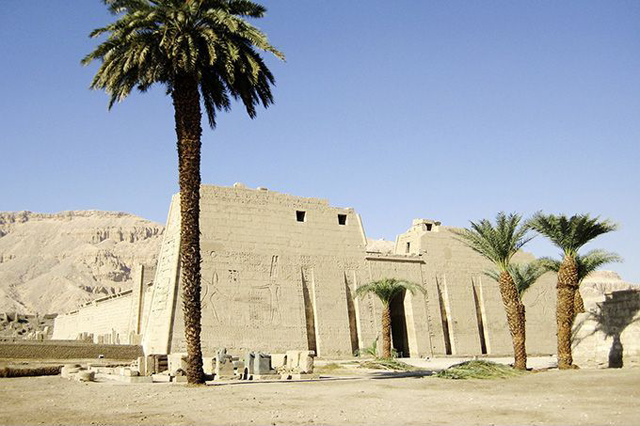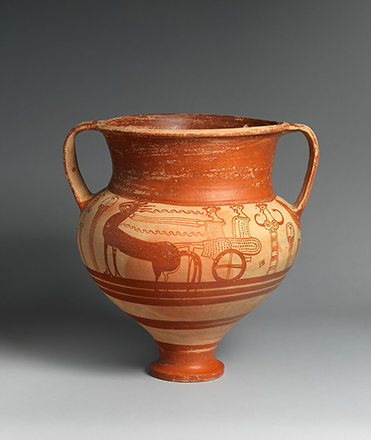You are here
Economic ties define state relations in Late Bronze Age
By Saeb Rawashdeh - Aug 04,2024 - Last updated at Aug 04,2024

In this photo a shaft in Wadi Faynan is seen. Faynan was a centre of the copper industry in the ancient time (Photo courtesy of ACOR)
AMMAN — During the Late Bronze Age, economic interconnectedness characterised relations between Egyptian dynasties, Hittite state and Mesopotamian kingdoms. Political ties were also followed by an intensive trade and products like win, olive oil, timber, ivory and woollen textiles were exchanged between these centres. Overland and maritime routes provided more exotic goods like semi-precious and precious stones like amber, pigments, metals, incense and technologies like pottery and glass making.
"The Levant [including Cyprus] was particularly attractive to both Hittites and Egyptians, neither of whom were naturally comfortable operating habitually or sufficiently flexibly on the open sea, because of the long-practised facility of its coastal centres in maritime expertise and trading," said the scholar Susan Sherratt from The University of Sheffield, specialised in Mediterranean archaeology.
Egypt maintained its traditionally advantageous close links with Byblos, for instance, down to the Ramesside period, Sherratt continued, while Ugarit with its ports of Minet Beida and Ras Ibn-Hani would appear to have been of far more use to the Hittite kings as a going concern, operating relatively freely under their vassalage from the 14th century onwards, than stultified by over-control or obliterated.
"Away from the sea, it is also not that many of the main centres or kingdoms, or
those in which surrounding powers were particularly interested, lie at crucial points or junctions along long-distance routes, either those running north and south along the Levantine Corridor or the Shephelah [e.g. Alalakh, Qatna, Kamid Loz, Hazor, Beth Shan, Shechem, and Lachish] or east and west, linking the coast with the inland valleys or with the Euphrates and beyond [e.g. Tell Far’ah South, Megiddo, Damascus, and Aleppo]," Sherratt underlined.
On Cyprus, the steady —or in some cases rapid— growth of urban centres, such as Enkomi, Kition, and Hala Sultan Tekke on the southern and eastern coasts of the island during the course of the Late Bronze Age, along with the appearance of short-lived coastal trading settlements, such as Pyla-Kokkinokremos or Maa-Palaeokastro, also emphasise its importance in maritime route networks in this period.
Wadi Faynan was a centre for the copper industry of that period with Cyprus and the copper was exploited and distributed around the region.
Some of our information about the role of agriculture and animal husbandry in the Late Bronze economies of the Levant comes from texts as well as from analyses of settlement pattern distributions, faunal and botanical remains, and (most recently) strontium isotopes, the professor continued, noting that archaeologically speaking, much of evidence for interregional and long-distance contacts and exchange rests on pottery, the most ubiquitous and indestructible class of artefact in the archaeological record in this part of the world but one which is seldom, if ever, of interest to those responsible for creating our textual sources.
"Developments in methods of interrogating pottery over the last thirty to forty years, including such techniques as optical emission spectrography, neutron
activation analysis, and petrographic analysis for helping to give clues as to composition and provenance, and organic residue analysis for helping to indicate contents, have had the effect of answering some questions, but at the same time raising numerous others and in general of suggesting a picture full of complexities," Sherratt elaborated.
While clay vessels can be used both as containers (e.g. the Canaanite jars which travelled widely within the Levant as transport vessels for such substances as olive oil, wine, and incense resins and as goods traded in their own right, perhaps their greatest value —especially when it comes to this latter function— lies in their capacity to indicate routes and route or trading networks.
Sherratt continued those certain regions, such as Cyprus, building on the back of its copper exports made an additional living not only from producing pottery for trade elsewhere in the Levant but also from trading in the pottery produced by others.
"Much of the Aegean [or apparently Aegean] pottery often interpreted in the past as a symptom of direct and intimate relations between Aegean centres and the Levant in the Late Bronze, if not of Aegean ‘colonies’, is likely to have formed part of relatively low-level, opportunistic trade, channelled through Cypriot traders.
Recent excavations at Tell Abu Hawam, on the Palestinian coast, have provided much more information about the range of places that ships which anchored there might have come from or recently visited, and have revealed a wealth of varied ceramic types, some of which, like pithoi and a staggering variety of cooking wares, rarely made it further inland and presumably represent vessels mainly for use on the ships themselves.
"The most surprising discovery as a result of this excavation raises all sorts of questions about the confidence with which we assign geographical and cultural labels to potsherds and readily use them to produce simplistic models of trade," Sherratt concluded.
Related Articles
AMMAN — Due to its geographic location, Cyprus played a significant role in trade during the Late Bronze Age.
AMMAN — During the Bronze Age, Cyprus played a role of cultural and economic hub, as well as a bridge between the Levant and southern Europe
AMMAN – The Bronze Age in Greece and Levant was a period marked by great kings and local ”small” kings.














